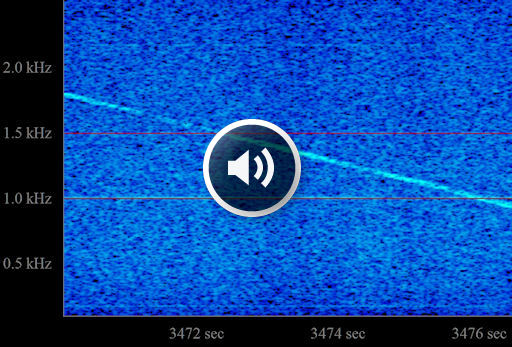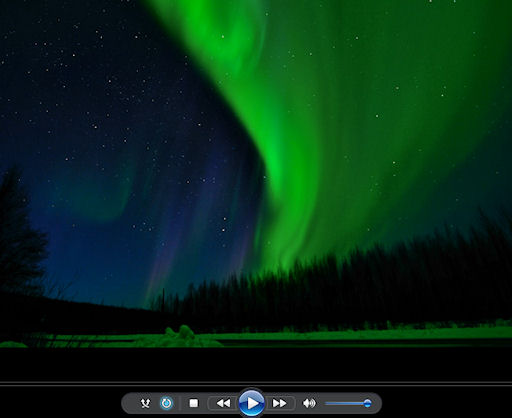Are we alone? Your iPhone has the answer. Download the all-new Drake Equation app to calculate the population of the Milky Way. | | |
SPACE STATION FLYBYS: The International Space Station (ISS) is making a series of bright flybys over Europe and North America this week. It outshines everything in the evening sky except the Moon. Sky watchers in the USA and Canada, check your cell phone for flyby times. Predictions are also available on the web.
ISS images: from Paco Bellido of Cordoba, Spain; from Jayme Hanzak of Cedar Grove, North Carolina; from Jasper Mitchin of Worthington, Ohio
SPACE STATION RADAR ECHO: The Air Force Space Surveillance Radar in Texas is scanning the skies above the USA for Earth-orbiting objects. Last night, the International Space Station flew through the radar's primary beam, producing a strong echo. Click to listen:

Multimedia: audio file (1 MB wav), dynamic spectrum
Because the ISS is traveling at 17,000 mph, the echo sounds Doppler-shifted like the whistle of a moving train. The physics of Doppler shifts works the same in Earth orbit as it does on Earth.
Radio engineer Stan Nelson recorded the echo from his backyard listening post in Roswell, New Mexico. "The ISS passed almost directly over Lubbock, TX--perfect geometry for sending the echo in my direction," he says. The next favorable radar pass occurs on April 19 at 8:37 pm - 8:42 pm CDT. Stay tuned for live ISS echoes on SpaceWeather Radio.
AURORA WATCH: April continues to be a good month for auroras. A new display could begin on April 20th when a solar wind stream is due to hit Earth's magnetic field. Wayne Barsky sends this dynamic preview from the Alaskan Arctic:

"To create the video sequence, I assembled a series of still frames taken over the course of almost four hours on the morning of April 1, 2011," says Barsky. "It was a moonless and brutally cold (-23 F) night. At one point, I was checking one of my camera settings and the metal end of my penlight froze to my tongue!"
Readers in the Arctic: Beware the penlight and remain alert for auroras.
April 2011 Aurora Gallery
[previous Aprils: 2010, 2009, 2008, 2007, 2006, 2005, 2004, 2003, 2002]
Potentially Hazardous Asteroids (
PHAs) are space rocks larger than approximately 100m that can come closer to Earth than 0.05 AU. None of the known PHAs is on a collision course with our planet, although astronomers are finding
new ones all the time.
On April 19, 2011 there were 1218 potentially hazardous asteroids.
Notes: LD means "Lunar Distance." 1 LD = 384,401 km, the distance between Earth and the Moon. 1 LD also equals 0.00256 AU. MAG is the visual magnitude of the asteroid on the date of closest approach. | | The official U.S. government space weather bureau |
| | The first place to look for information about sundogs, pillars, rainbows and related phenomena. |
| | Researchers call it a "Hubble for the sun." SDO is the most advanced solar observatory ever. |
| | 3D views of the sun from NASA's Solar and Terrestrial Relations Observatory |
| | Realtime and archival images of the Sun from SOHO. |
| | from the NOAA Space Environment Center |
| | the underlying science of space weather |
| | for out-of-this-world printing and graphics |

